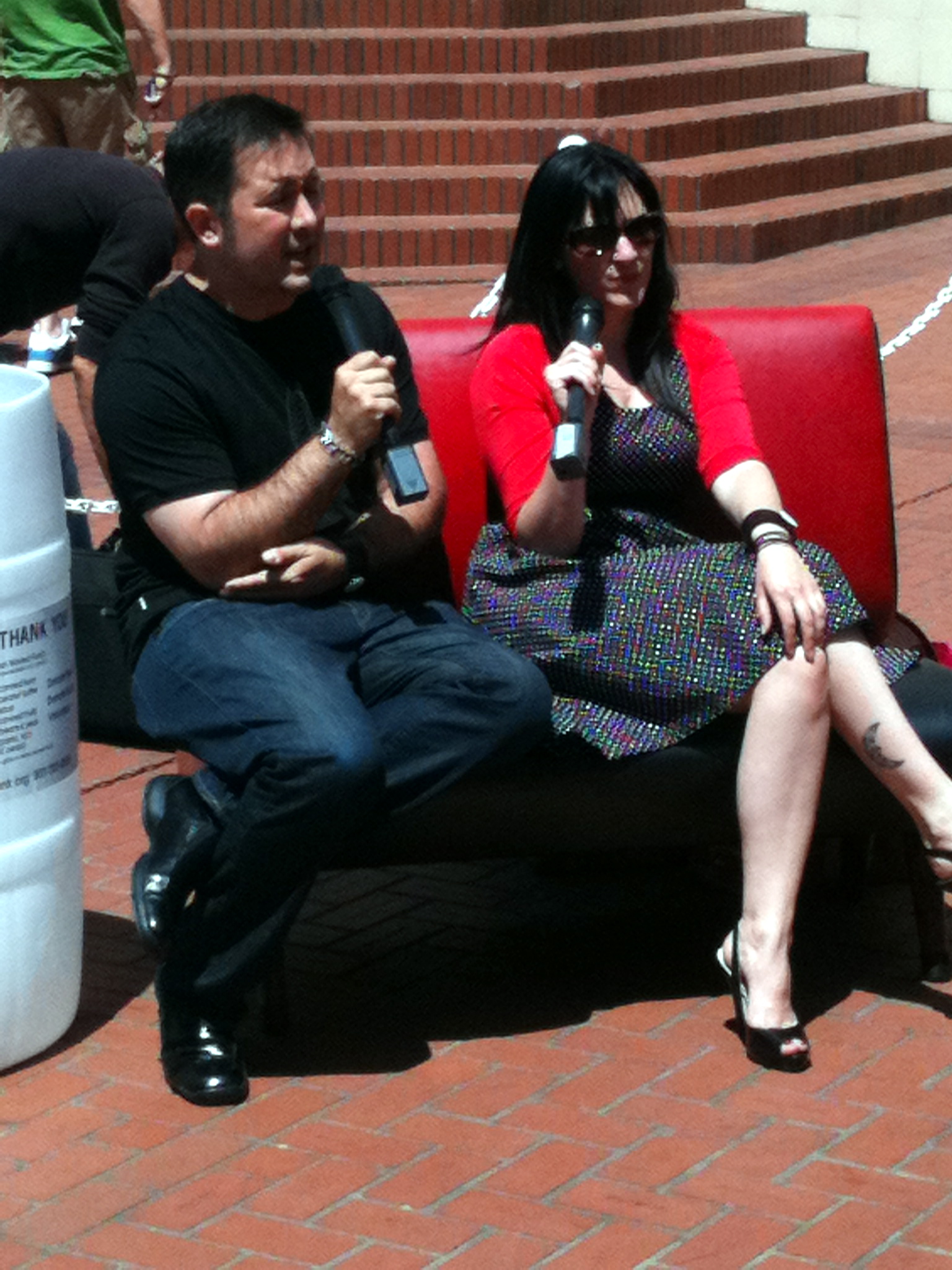 For 30 hours last weekend, Pioneer Square was a three-ring circus of sorts, with swing dance lessons, Taiko drums and a comedian named Sasquatch, all streamed live to the Internet. This wasn’t just another YouTube video; it was the future of fundraising.
For 30 hours last weekend, Pioneer Square was a three-ring circus of sorts, with swing dance lessons, Taiko drums and a comedian named Sasquatch, all streamed live to the Internet. This wasn’t just another YouTube video; it was the future of fundraising.
BY EMMA HALL
Curious onlookers gathered in Pioneer Square as the bravest few couples grabbed their partners and lined up, men on one side, women on the other. On the nearby stage, local rockabilly and swing band The Twangshifters warmed up.
“Come on, don’t be nervous!” burlesque and variety show promoter Frankie Tease coaxed. “Step, step, rock step. Step, step, rock step!”
Laughing and following her lead, the dancers participated in the swing dance lesson. Some caught on right away while others glanced nervously at the video cameras capturing their every bumbling move.
Meanwhile, viewers gathered around their computers, iPhones and iPads watching the display live online. This wasn’t just another YouTube video; it was the future of fundraising.
 |
Rick Turoczy and Cami Kaos hosting the event |
The telethon was going the way of the tapedeck as a dead medium until Rick Turoczy, Cami Kaos and Mike “Dr. Normal” Gebhardt came along. The three Portland tech gurus organized the second 30 Hour Day in less than a year on July 2, with content appearing live in Pioneer Square and streaming online from 4 PM Friday to 10 PM Saturday.
The first 30 Hour Day was born out of an idea the three organizers had to pool together their online social networks and create an event that would help others. This time it was a much bigger production with a live appearance in Pioneer Square rather than acts recorded in a closed studio and broadcast live online.
“We really stepped it up a notch this time around with the appearance in Pioneer Square,” said Rick Turoczy of Silicon Florist. “But it was experimental, and made fundraising more difficult.”
Last December the event raised about $7,000 plus food and toy donations for a total of almost $10,000. The organizers feared that holding the event outside of the holiday season would mean people just weren’t in the giving mood, and they were correct. They only raised $2,000 this time. The money benefited the Oregon Food Bank, the Oregon Trail Chapter of the American Red Cross and p:ear.
By comparison, the Waterfront Blues Festival raised $622,000 and 90,000 pounds of donated food over the weekend for the food bank.
“Next time we’ll make sure to get someone from our community who knows a lot about the actual fundraising aspect, specifically live fundraising,” said Kaos.
The entire staff, including all of the acts, was made up of volunteers. The crew of PDX.FM did most of the technical work. Local developer Brian Enigma designed and donated an iPhone app. A huge variety of people who may previously have only interacted with one another online came together offline to produce the event.
“We found an inventive way to give back,” said Kaos. “As far as online fundraising goes there is a lot of simple ‘click the button’ types right now, but we are the first to actually create entertainment that charities can use.”
The livestream was available to be embedded by anyone who wanted it, “from the blog with 0 hits this month to the site with one million hits per second” as the 30 Hour Day website stated. The content was all recorded and now is undergoing editing into segments that will be released under a creative commons license for use by charities or the various entertainers that appeared.
Social media was important at all stages of the event planning, from the beginning with gathering volunteers through Twitter and Facebook, to the end with the very way that viewers donated, through “Causes,” part of Network for Good.
So while 30 Hour Day may be reviving the telethon by making it adapt to the changing face of the web and social media, the question is whether this medium of fundraising can be effective.
“Social media was the critical component to pulling the event off because it provided free tools to help promote, manage and fundraise for the event,” said Turoczy. “Without social media, this kind of fundraising would be impossible and cost prohibitive.”
Emma Hall is web editor for Oregon Business.


